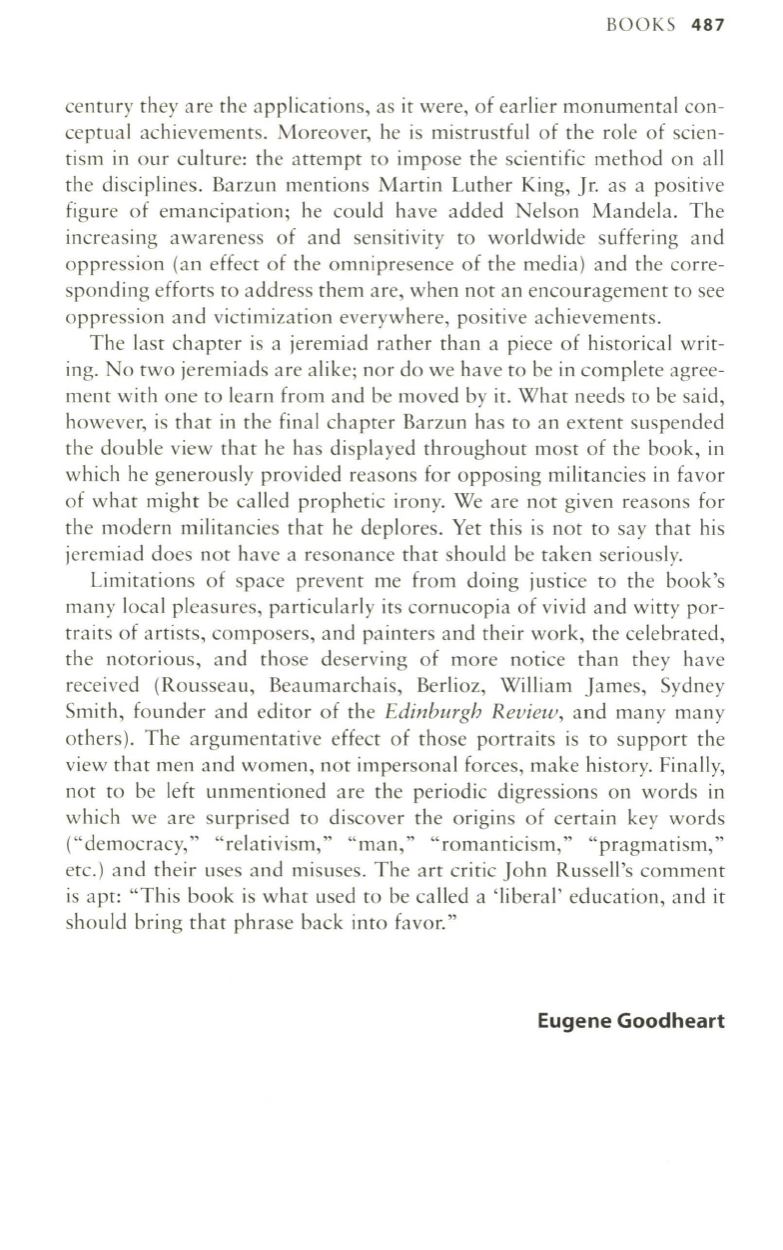
BOOKS
487
century they are the applications, as it were, of earlier monumental con–
ceptual achievements. Moreover, he is mistrustful of the role of scien–
tism in our culture: the attempt to impose the scientific method on all
the disciplines . Barzun mentions Martin Luther King, Jr. as a positive
figure of emancipation; he could have added Nelson Mandela. The
increasing awareness of and sensitivity to worldwide suffering and
oppression (an effect of the omnipresence of the media) and the corre–
sponding efforts to address them are, when not an encouragement to see
oppression and victimization everywhere, positive achievements.
The last chapter is a jeremiad rather than a piece of historical writ–
ing. No two jeremiads are alike; nor do we have to be in complete agree–
ment with one to learn from and be moved by it. What needs to be said,
however, is that in the final chapter Barzun has to an extent suspended
the double view that he has displayed throughout most of the book, in
which he generously provided reasons for opposing militancies in favor
of what might be called prophetic irony. We are not given reasons for
the modern militancies that he deplores. Yet this is not to say that his
jeremiad does not have a resonance that should be taken seriously.
Limitations of space prevent me from doing justice to the book's
many local pleasures, particularly its cornucopia of vivid and witty por–
traits of artists, composers, and painters and their work, the celebrated,
the notorious, and those deserving of more notice than they have
received (Rousseau, Beaumarchais, Berlioz, William James, Sydney
Smith, founder and editor of the
Edinburgh Review,
and many many
others). The argumentative effect of those portraits is to support the
view that men and women, not impersonal forces, make history. Finally,
not to be left unmentioned are the periodic digressions on words in
which we are surprised to discover the origins of certain key words
("democracy," "relativism," "man," "romanticism," "pragmatism,"
etc.) and their uses and misuses. The art critic John Russell's comment
is apt: "This book is what used to be called a 'liberal' education, and it
should bring that phrase back into favor."
Eugene Goodheart


